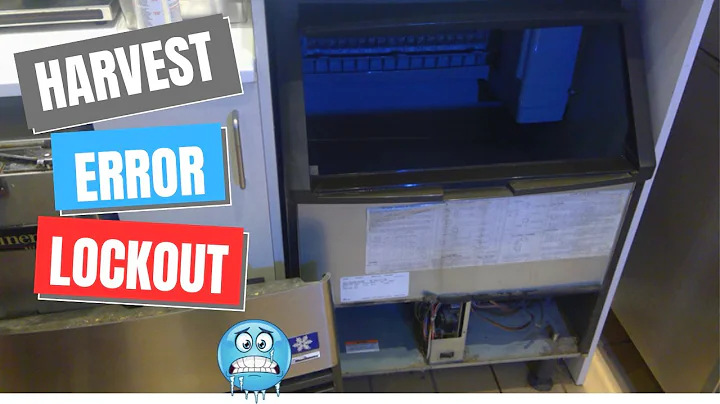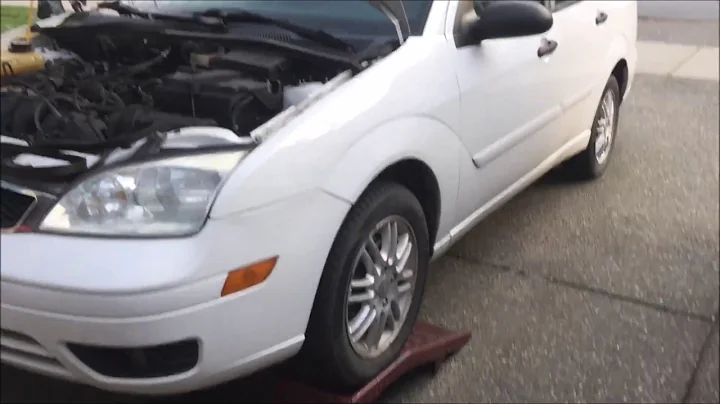Winterize Your Home: Essential Steps for Protection
Table of Contents:
- Introduction
- Why Winterizing is Important
- Tools Needed for Winterizing
- Step 1: Turn off the Water Heater
- Step 2: Turn off the Main Water Supply
- Step 3: Empty the Water Heater
- Step 4: Remove Filters and Flush Toilets
- Step 5: Remove Shower Heads (Optional)
- Step 6: Disconnect Hot Water Pipe and Attach Air Hose
- Step 7: Blow Out the Water Lines
- Step 8: Suck Out Water from Toilets
- Step 9: Add Antifreeze
- Step 10: Extra Safety Measures
- Conclusion
Winterizing Your Building: A Step-by-Step Guide
Introduction
Winterizing a building is an essential task to prevent any potential damage to the plumbing system. Whether you are winterizing your home or a commercial building, it's important to take the necessary steps to protect your pipes from freezing and bursting. In this guide, we will walk you through the process of winterizing your building, step by step.
Why Winterizing is Important
Before we dive into the steps of winterizing, let's understand why it is crucial to undertake this task. Cold weather can cause water in your pipes to freeze, leading to pipe bursts and water damage. By winterizing your building, you can avoid costly repairs and ensure a smooth transition when spring comes.
Tools Needed for Winterizing
To successfully winterize your building, you will need several tools. These include:
- Air compressor: Choose an air compressor with a higher CFM for better air pressure.
- Hose: Use a hose to empty the water heater and connect it to the air compressor.
- Extension cord: A reliable extension cord will be required to power the air compressor.
- Flathead screwdriver: You will need this tool to turn off the water heater valve.
- Lockouts: These are essential for safety when working with water lines.
- Water line adapter: This tool allows you to connect the air compressor to the water line.
- Rubber washer: Ensure your hose has a rubber washer to prevent leaks.
- Pliers: Use pliers to tighten connections and avoid leaks.
Step 1: Turn off the Water Heater
Before beginning the winterizing process, it's essential to turn off the water heater. This step prevents heating something with no water in it, which can lead to damages.
Step 2: Turn off the Main Water Supply
Locate the main water supply valve and turn it off to stop the water flow. This step is crucial to prevent any water from entering the system while you work on winterizing.
Step 3: Empty the Water Heater
Connect a hose to the water heater's drain valve, ensuring a tight fit with a rubber washer. Open the valve and let the water drain out slowly. Wait until the tank is completely empty before moving on to the next step.
Step 4: Remove Filters and Flush Toilets
Remove all filters from sinks to prevent debris from traveling through the pipes. Flush toilets to remove as much water as possible from the tanks and bowls.
Step 5: Remove Shower Heads (Optional)
If you have shower heads, consider removing them to ensure there's no trapped water that can freeze and cause problems. Take this opportunity to clean and inspect the shower heads.
Step 6: Disconnect Hot Water Pipe and Attach Air Hose
Disconnect the hot water pipe from the water heater and attach the water line adapter. Connect the other end of the adapter to the air compressor hose. Ensure the air pressure in the hose is turned off before connecting.
Step 7: Blow Out the Water Lines
Slowly introduce air pressure into the pipes by turning on the air compressor at a low PSI setting. Gradually increase the PSI to around 40, while making sure there are no leaks in the system. Open all faucets and drain valves to blow out the water lines thoroughly.
Step 8: Suck Out Water from Toilets
Use a shop vac to remove any remaining water from the toilets. This step is vital to prevent water from freezing in the bowls or tanks.
Step 9: Add Antifreeze
Pour antifreeze down each drain, including kitchen sinks, bathrooms, and shower drains. Ensure all drains are treated to prevent freezing during winter.
Step 10: Extra Safety Measures
As an added precaution, cover the toilet seats and sinks with painter's tape to discourage accidental use while the building is being winterized.
Conclusion
By following these steps, you can effectively winterize your building and protect your plumbing system from freezing temperatures. Taking the time to properly prepare for winter will save you from the hassle and expense of dealing with burst pipes when spring comes. Stay proactive and ensure the longevity of your building's plumbing system.
Highlights:
- Winterizing your building is crucial to prevent frozen pipes and costly water damage.
- Tools needed include an air compressor, hose, extension cord, flathead screwdriver, lockouts, water line adapter, rubber washer, and pliers.
- Steps include turning off the water heater, the main water supply, emptying the water heater, removing filters and flushing toilets, optionally removing shower heads, disconnecting the hot water pipe, blowing out the water lines, sucking out water from toilets, adding antifreeze, and taking extra safety measures.
FAQ:
Q: Can I use any kind of antifreeze for winterizing?
A: Yes, you can typically use any type of antifreeze, but it is recommended to use RV antifreeze or general-purpose antifreeze.
Q: Do I need to remove shower heads?
A: Removing shower heads is optional, but it is recommended to prevent any trapped water from freezing.
Q: Why is it important to empty the water heater before introducing air pressure?
A: Emptying the water heater ensures that no water is stirred around by air pressure, allowing for a more effective winterization.
Resources:
- Video tutorial on creating a water line adapter: [link to video tutorial]







